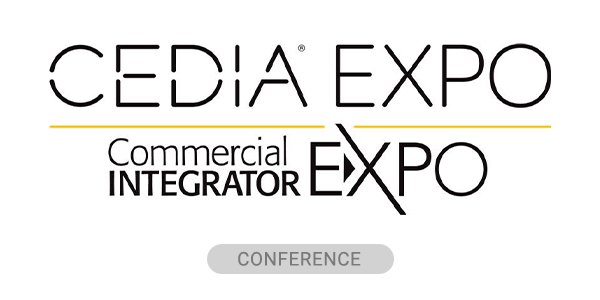At Total Tech Summit 2019, the commercial integrator group got to attend a panel, headed by CI’s Craig MacCormack, about AV as a Service. Panelists included:
- Peter Charland, executive VP of global sales and service of HB Communications
- Ben Mankin, president of Mankin Media Systems
- Bill Riley, regional director at Sensory Technologies
Here are 12 managed AV services takeaways from the panel discussion that every integrator should be thinking about:
Selling is the transfer of trust, but discounts are the transfer of risk
If a customer asks about getting services cheaper, the answer is yes, but that means the customer accepts the risk of things going wrong. However, adding managed services means the integrator accepts the risk, and will be there to fix it when things go wrong.
Manage expectations
IT pro customers have a certain expectation for service contracts when it comes to IT technology. The failover points in an AV environment are different. You have to reset the way they think of managed services in order to sell them AV managed services.
The sales team will be a struggle
Certain sales professionals won’t have the experience of selling managed services, and it won’t be an overnight fix to allow that to happen. Managed service is selling an idea versus selling a box, which is what sales teams in the AV industry are used to. It helps to have at least one expert in selling managed services that can help the team better understand the pitch.
Bake in managed services with everything else
It doesn’t have to be an add-on, and you don’t need to give them the option. When you present the package of integrated technology its perfectly acceptable to include managed services into that package. IT customers especially are already expecting it. If you don’t act like it’s a luxury that increases the cost, but a must for the technology, the customer will understand that it is a must as well.
Understand what equipment is qualified for managed services
Not all AV equipment is able to be seen remotely. Analog devices, for example, can’t be connected to the network and can’t be seen. That means those devices can’t be a part of the managed services picture. You’ll need to educate the client to get them to understand what technology will work in a managed services deal, and what technology will not.
Related: 5 MSP Accounting Tips to Keep Your Transition to Managed Services On-Track
Become a trusted partner as opposed to a transactional vendor
Managed services helps you accomplish just this. Becoming a trusted partner lets you get to the table when there are capital budgeting and strategic planning meetings. You can help clients decide how to use technology to achieve goals.
Understand who you are speaking with
Are you speaking with a cost-side person, or a revenue-side person? On the cost side there is a budget, and the goal is to get the most for the least amount of money. On the revenue side they’re concerned with outcomes and achieving corporate goals. If you can help them do that then they will be less concerned with the price as long as the outcome is greater.
Educate the technology client
Many times the client is the tech guy that will be in charge of fixing equipment when it breaks. That individual may think that managed services will take away an aspect of that job. However, if you can explain to the tech guy that this augments his ability to fix equipment and frees up his time for more important aspects of his job, it’s an easier sell.
Reengage when the client needs you most
Clients have turnover in staff that puts a strain on their processes. Key in on times when the tech guy leaves, or the client is posting jobs looking for new tech guys. Approach them then and offer managed services to assuage the extra work until they find a replacement. It gets your foot in the door and will show them the benefits of having your firm as a resource to help when things won’t work.
Train sales staff on the advantages of managed AV services
This will help them sell. Much of this training will be the conversation starter – how to introduce the idea of managed services to the client. Other than that it’s simple – annual cost, response time, service level agreement, etc.
Utilize statistics to keep them coming back
One of the great things about managed AV services is your organization’s ability to justify them through data. You’ll know how many tickets came in, what the problem was, and how long the response time was until it was fixed. Present that data to the client in order to show them your exact value and justify the cost of AV as a Service.
Match levels with the organization
If your salesperson is talking to the technology manager at your potential client’s organization, that doesn’t mean they should be the people talking. It’s often helpful to introduce executives at your firm to executives at your client’s. The executive may point to problems with the technology manager that your sales person will never learn about, and those problems might be solved with managed services.










